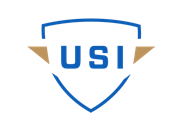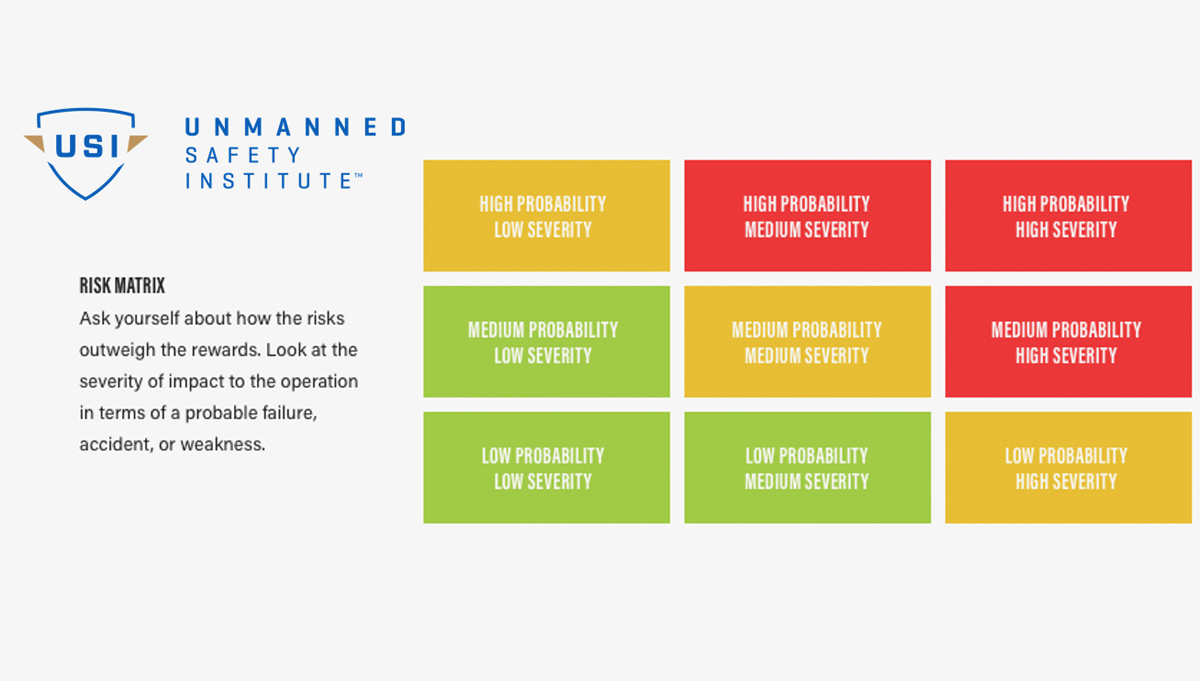Recognizing and understanding safety in unmanned aircraft (UA) operations is often expressed and overstated as a brief expression of “be safe out there”. What does it mean and look like to “be safe” when operating an Unmanned Aircraft System (UAS) or drone? Safety best practice put into action for UAS operations involves the operator (soon to be known as remote pilot) to analyze and measure internal/external factors and the potential risk that those factors could pose to the operation. As commercial operators, recognizing and mitigating risk is key to maintaining safe and quality company practices.
One way this can be done is utilizing a Flight Risk Assessment Tool (FRAT), for each operation that takes place. The risk assessment categorizes risk based upon internal and external factors to an operation. These contributing factors are numerous, but could include weather, remote pilot experience, new technology reliability/updates, operational complexity, and/or proximity to an airport. It does not matter how big or small your particular operation is since you are operating within the National Airspace. A risk assessment is conducted not only to protect you, your crew and your aircraft, but also the people, property and other aircraft affected by your operation. In other words, you could be an incredible remote pilot, but if external factors (such as a bad firmware update, intermittent communications, congested operating area, gusting winds) have not been considered in a risk assessment prior to operating, it is only a matter of time before compounding risk categories result in an injury or accident. Once risk has been identified, analyzed, and briefed prior to flight, ways to mitigate medium or high risk values are necessary. There are many ways to accept or mitigate risk and remote pilots that are on the lookout for threats to the flight, will maintain a risk averse operating environment. Different operations, both big and small, will have differing complexities of operational threats.For example:
Once risk has been identified, analyzed, and briefed prior to flight, ways to mitigate medium or high risk values are necessary. There are many ways to accept or mitigate risk and remote pilots that are on the lookout for threats to the flight, will maintain a risk averse operating environment. Different operations, both big and small, will have differing complexities of operational threats.For example:- Winds that are hazardous to one UA platform may be well within the limits of another.
- There could be congestion on the selected bandwidth for command and control, but another company’s UA has the option for more than one bandwidth selection.
- Cold temperature may reduce the endurance of a battery powered UA, however, a fuel powered UA may have no reduction in endurance.
- One company may utilize experienced UAS operators with FAA certificates, whereas another company may choose to use FAA certified pilots with very little UAS experience.
 About the ContributorJosh Olds is Vice President of Operations at the Unmanned Safety Institute based in Orlando, FL. He has served in a variety of UAS operational roles operating and maintaining both fixed wing and rotorcraft Unmanned Aircraft Systems. Josh is a commercially rated pilot and an airframe & power plant mechanic. The most recent operation was in the private security sector as a shipboard pilot/maintainer for unmanned helicopters utilized in anti-piracy operations. In his operational roles, Josh has developed detailed operational and training guidance documents for a variety of industry sectors. In his current role as Vice President of Operations, Josh manages day-to-day operations, including the Institute’s Training Services and Safety Assurance Divisions. Josh also serves on Embry-Riddle Aeronautical University’s faculty as an Assistant Professor.To learn more about integrating a FRAT into your operation, contact USI at 1-877-535-SAFE, or e-mail us at [email protected].
About the ContributorJosh Olds is Vice President of Operations at the Unmanned Safety Institute based in Orlando, FL. He has served in a variety of UAS operational roles operating and maintaining both fixed wing and rotorcraft Unmanned Aircraft Systems. Josh is a commercially rated pilot and an airframe & power plant mechanic. The most recent operation was in the private security sector as a shipboard pilot/maintainer for unmanned helicopters utilized in anti-piracy operations. In his operational roles, Josh has developed detailed operational and training guidance documents for a variety of industry sectors. In his current role as Vice President of Operations, Josh manages day-to-day operations, including the Institute’s Training Services and Safety Assurance Divisions. Josh also serves on Embry-Riddle Aeronautical University’s faculty as an Assistant Professor.To learn more about integrating a FRAT into your operation, contact USI at 1-877-535-SAFE, or e-mail us at [email protected]. 















Comments